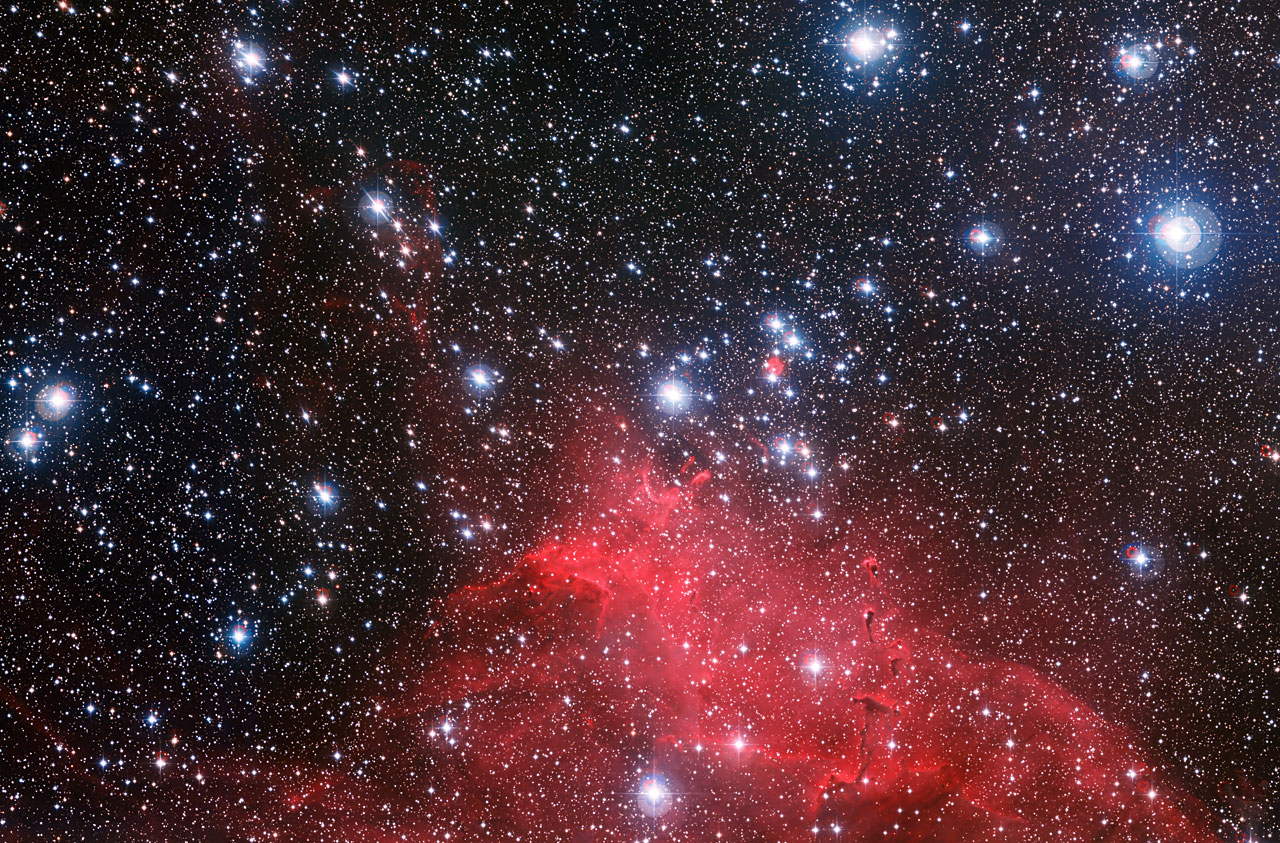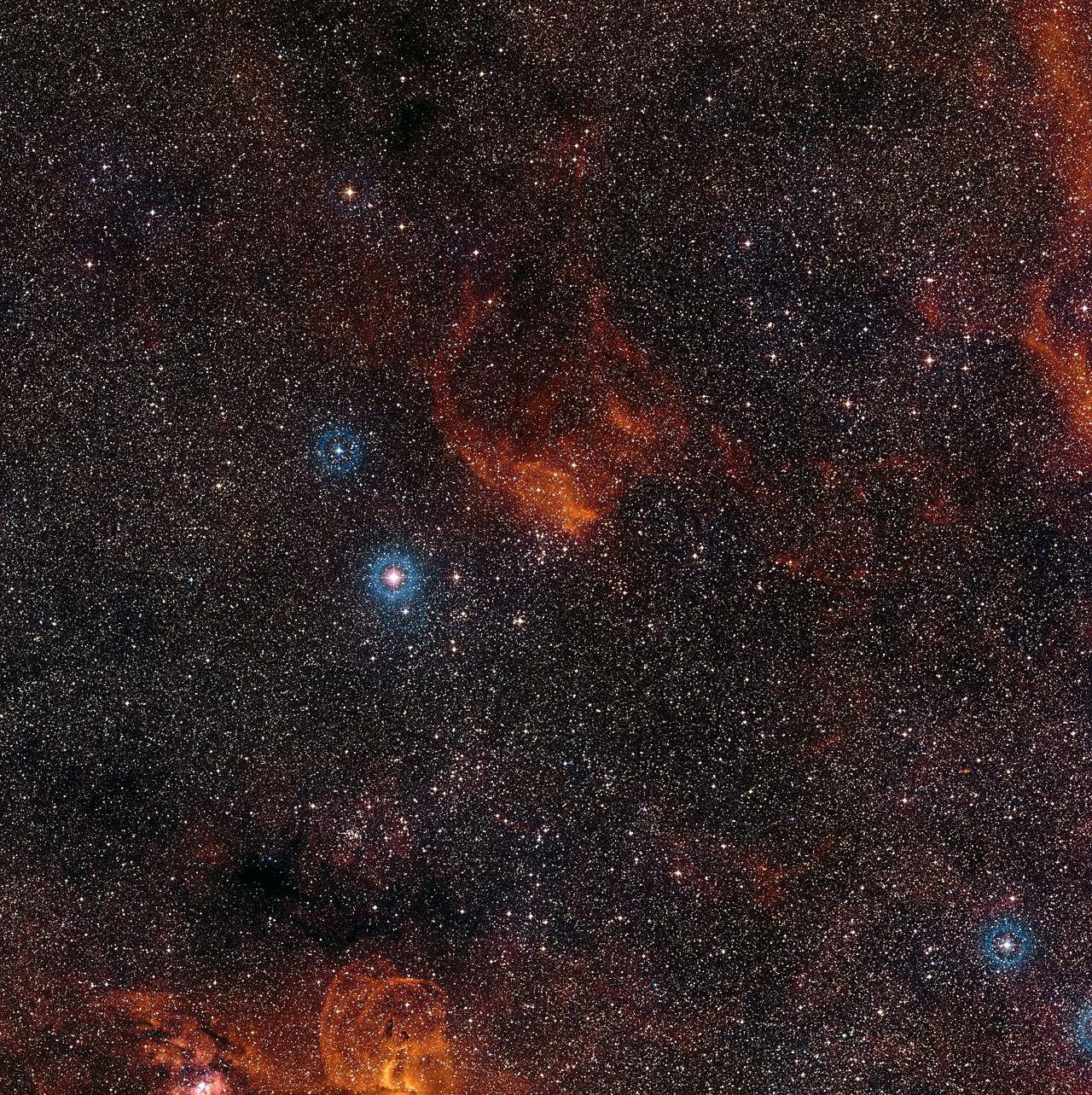Strange 'Elephant Trunk' Space Clouds Surround Star Cluster (Video)

A telescope in Chile has captured the most detailed views ever of odd clouds of interstellar dust that are being sculpted into strange shapes by the wind from nearby stars.
Astronomers used the European Southern Observatory's La Silla Observatory to capture the amazing new images of the space clouds around the distant star cluster NGC 3572. The new photo shows a mysterious ring and structures known as "elephant trunks" — huge columns of interstellar dust and gas. You can watch a video flythrough of the new space cloud photos provided by ESO.
"This new image shows how these clouds of gas and dust have been sculpted into whimsical bubbles, arcs and the odd features known as elephant trunks by the stellar winds flowing from this gathering of hot young stars," ESO officials wrote in an image description.
NGC 3572 — located in the southern constellation Carina — plays host to many young, hot stars that shine bright blue and white in the new photos and shape the clouds, ESO officials wrote.

The "Pillars of Creation" photo of the Eagle Nebula taken by NASA's Hubble Space Telescope is the most famous example of elephant trunks, according to ESO representatives.
Another interesting aspect of the new image is a ring-shaped nebula located a bit above the center of the picture. Scientists aren't sure what the origin of the nebula is, but they think it might be a leftover from the cloud of material that formed the star cluster, or it could be a bubble around a hot star. Some astronomers also suggest that it could be a planetary nebula — the remains of a dying sunlike star.
Stars in clusters might have formed at around the same time, but they are incredibly diverse in size, temperature, color and mass, ESO officials said.
Get the Space.com Newsletter
Breaking space news, the latest updates on rocket launches, skywatching events and more!
"These gangs of young stars stick together for a relatively short time, typically tens or hundreds of millions of years," ESO officials said. "They are gradually disbanded by gravitational interactions, but also because the most massive stars are short-lived, burning through their fuel quickly and ultimately ending their lives in violent supernova explosions, thus contributing to the dispersion of the remaining gas and stars in the cluster."
Follow Miriam Kramer @mirikramer and Google+. Follow us @Spacedotcom, Facebook and Google+. Original article on SPACE.com.
Join our Space Forums to keep talking space on the latest missions, night sky and more! And if you have a news tip, correction or comment, let us know at: community@space.com.

Miriam Kramer joined Space.com as a Staff Writer in December 2012. Since then, she has floated in weightlessness on a zero-gravity flight, felt the pull of 4-Gs in a trainer aircraft and watched rockets soar into space from Florida and Virginia. She also served as Space.com's lead space entertainment reporter, and enjoys all aspects of space news, astronomy and commercial spaceflight. Miriam has also presented space stories during live interviews with Fox News and other TV and radio outlets. She originally hails from Knoxville, Tennessee where she and her family would take trips to dark spots on the outskirts of town to watch meteor showers every year. She loves to travel and one day hopes to see the northern lights in person. Miriam is currently a space reporter with Axios, writing the Axios Space newsletter. You can follow Miriam on Twitter.









